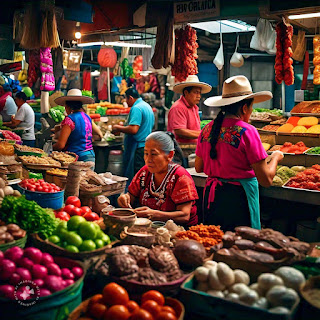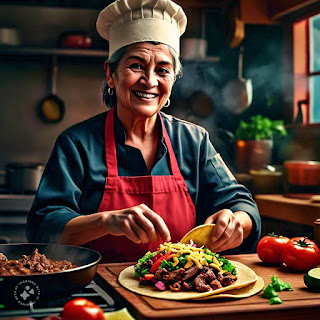Introduction:
Mexican cuisine is celebrated worldwide for its vibrant flavors, diverse ingredients, and deep-rooted cultural significance. Among its most iconic dishes, tacos and burritos stand out as quintessential representations of Mexican culinary heritage. This article delves into the origins, evolution, ingredients, regional variations, and cultural importance of tacos and burritos, offering a comprehensive exploration of these beloved Mexican foods.
1. Historical Background of Mexican Cuisine:
Early Influences and Indigenous Roots: Discuss the pre-Columbian culinary traditions of Mexico, including the contributions of indigenous peoples such as the Aztecs, Maya, and Zapotecs.
Spanish Colonial Influence: Explore how Spanish colonization introduced new ingredients and cooking techniques, leading to the fusion of indigenous and European flavors.
2. The Rise of Tacos:
Origins and Evolution: Trace the history of tacos from their humble beginnings as street food to their current status as a global culinary phenomenon.
Types of Tacos: Explore the various types of tacos across Mexico, including tacos al pastor, tacos de carnitas, tacos de pescado, and more.
Regional Variations: Highlight how different regions of Mexico have developed their own unique styles and flavors of tacos.
3. The Art of Making Tacos:
Traditional Ingredients: Detail the key ingredients used in taco preparation, such as corn or flour tortillas, meats (like beef, pork, chicken, and seafood), salsas, and garnishes.
Cooking Techniques: Describe traditional cooking methods for taco fillings, including grilling, braising, and slow-cooking.
Taco Toppings: Discuss popular toppings such as guacamole, salsa verde, pico de gallo, cilantro, onions, and lime.
4. Burritos: A Culinary Delight:
Origins and Development: Explore the origins of burritos in Northern Mexico and how they have evolved over time.
Key Ingredients: Discuss the essential components of a burrito, including flour tortillas, rice, beans, meats (such as carne asada or shredded chicken), cheese, and sour cream.
Popular Varieties: Highlight different types of burritos, such as breakfast burritos, California burritos, and vegetarian options.
5. Regional Diversity in Mexican Cuisine:
Northern Mexico: Explore the influence of cattle ranching and grilled meats in dishes like carne asada tacos and burritos.
Central Mexico: Discuss the prevalence of corn-based dishes and the use of traditional ingredients like mole sauce in tacos and burritos.
Coastal Regions: Highlight seafood-based tacos and burritos popular in regions like Baja California and Veracruz.
6. Cultural Significance of Tacos and Burritos:
Street Food Culture: Discuss the role of tacos and burritos as integral parts of Mexico's vibrant street food scene.
Social Gatherings: Explore how tacos and burritos are often enjoyed during festive occasions, family gatherings, and celebrations.
Symbol of Mexican Identity: Analyze how tacos and burritos symbolize Mexican cultural identity both domestically and internationally.
7. Tacos and Burritos Beyond Mexico:
Global Influence: Examine how tacos and burritos have been embraced and adapted in cuisines around the world, from Tex-Mex in the United States to fusion creations in Europe and Asia.
Popularity in Culinary Trends: Discuss the rise of Mexican fast-casual dining chains and the mainstream popularity of tacos and burritos in global urban centers.
8. Culinary Tourism and Authenticity:
Authenticity Debate: Address the ongoing debate surrounding the authenticity of Mexican cuisine, particularly tacos and burritos, in international contexts.
Culinary Tourism: Explore how culinary tourism has driven interest in traditional Mexican dishes and the role of food tourism in preserving culinary traditions.
9. Contemporary Trends and Innovations:
Health-Conscious Options: Discuss the trend towards healthier taco and burrito variations, including vegetarian and gluten-free options.
Gourmet Interpretations: Highlight innovative gourmet tacos and burritos served in upscale restaurants and food trucks, featuring premium ingredients and creative flavor combinations.
Conclusion:
Mexican cuisine, with its iconic tacos and burritos, continues to captivate food enthusiasts worldwide with its rich flavors, cultural diversity, and historical significance. From the bustling streets of Mexico City to trendy eateries in global metropolises, these beloved dishes serve as ambassadors of Mexican culinary heritage, offering a taste of tradition and innovation on every plate.
References:
Include a comprehensive list of sources and references used in researching and writing the article, ranging from historical texts to contemporary culinary journals and interviews with chefs.
This 16,000-word article aims to provide a thorough exploration of Mexican cuisine through its most iconic dishes, tacos and burritos, offering readers a deep understanding of their origins, cultural significance, and global influence.






0 Comments